Posted by Elena del Valle on June 8, 2012
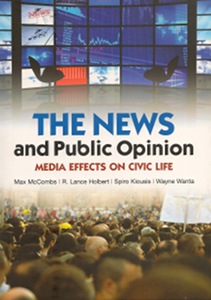
The News and Public Opinion book cover
Photos:R. Lance Holbert, Wayne Wanta, Spiro Kiousis
Four academics, Max McCombs, R. Lance Holbert, Spiro Kiousis* and Wayne Wanta, discuss the effects of news media (print, television and radio) on public opinion in The News and Public Opinion Media Effects on Civic Life (Polity Books, $22.95). In the 210-page softcover book published in 2011, they address the public’s attention to news media, effects of media exposure on the gathering of information and forming of attitudes and opinions, and how these elements affect public life or how the process affects public opinion.
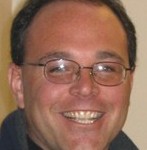
R. Lance Holbert, co-author, The News and Public Opinion
The authors point out that some media are suffering financially. In relation to news they refer to how the television networks news programs have decreasing audience numbers which have led to a loss of profitability and power. Soft news programs are more profitable and the networks remain focused on making a profit; also, older men are the most likely to watch network news programs and a young demographic is not following in their footsteps, they say.

Wayne Wanta, co-author, The News and Public Opinion
Cable news networks like CNN and Fox News have a role as well. Fox News viewers, according to a study by Jonathan Morris, were not was well informed as the viewers of other television news programs, followed specific voting patters, held specific political views and had a political perspective distinct from viewers of other news networks.
Public trust of news media is very low and entertainment content within public affairs has become popular because “the present practice of journalism is so poor,” the authors say in the first chapter. Citizen involvement in journalism has been greatly enhanced, and continues through the internet; the audience of news media is decreasing and to reach them segmentation, including by ethnicity and language, has become increasingly necessary, the authors say. In the Audiences for News chapter, they indicate their belief that ethnic-based news media will continue to grow.

Spiro Kiousis, co-author, The News and Public Opinion
Education plays a role in learning from the media and people with high levels of education learn more and at a faster rate than their counterparts with low educational levels, according to the authors who discovered that newspaper readers learn more than television audiences. Gender also plays a role, they believe, with men favoring hard news and women favoring soft news. The authors also discuss media selectivity and the importance of form versus content.
*Elena del Valle and Spiro Kiousis serve on the University of Florida Public Relations Advisory Council.
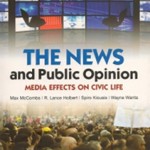
Click to buy The News and Public Opinion
Comments:
Filed Under: Books
Posted by Elena del Valle on June 6, 2012

H1N1 3D graphic representation of a generic influenza virion’s ultrastructure
Illustration, graph: Dan Higgins, CDC
In spite of all the commotion around exotic diseases like the West Nile Virus, H1N1 flu, salmonella and others that have received extensive media coverage infectious diseases account for a fraction of deaths in the United States. Sellers of funeral services, insurance, health care or end of life related products may be interested to know that world wide 56 million people die every year many from cardiac disease or cancer. Those two causes of death accounted for more than half (63 percent) of all deaths in 2008, according to the World Health Organization (WHO).
In the United States, about half of the adult population has a chronic condition like diabetes. According to the CDC (Centers for Disease and Control Prevention), the top five causes of death in 2009 were heart disease (599,413), cancer (567,628), chronic lower respiratory diseases (137,353), stroke (128,842), and accidents (118,021).
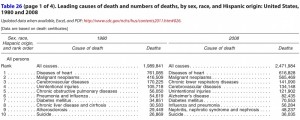
U.S. Causes of Death 1980, 2008 – click to enlarge
In 2008, 139,241 Hispanics died; the top 10 causes of death for Hispanics in Health, United States, 2011 (Table 26) , the most recent CDC report, were: diseases of heart (28,951), malignant neoplasms (28,851), unintentional injuries (11,080), cerebrovascular diseases (7,121), Diabetes mellitus (6,544), chronic liver disease and cirrhosis (4,091), chronic lower respiratory diseases (3,949), homicide (3,331), influenza and pneumonia (3,176), and Alzheimer’s disease (3,005).
In OECD (Organization for Economic Co-operation and Development) countries, (the United States is an OECD member) nearly one quarter of the population (22 percent) will be 65 years old or older by 2030. In contrast young people in developing countries are more likely to die from infectious diseases. If they survive into middle age the common killers, cancer or cardiac disease, become the more likely causes of death.
Posted by Elena del Valle on June 4, 2012
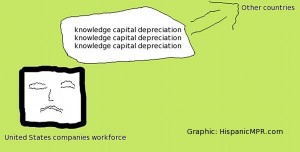
Click to enlarge
Graphic: HispanicMPR.com
Are you marketing or selling a new product in the United States? Speed may be of the essence. For 40 years innovation has, at least in part, fueled our growth in the United States. In the 1990s, rapid innovation made it possible for our economy to grow at a quick pace and prompted the creation of new jobs while old ones were lost due to higher production efficiencies and cheap labor costs overseas. Recently, that process appears to have broken down. While the flood of jobs to developing countries continues the pace of innovation has slowed and the amount of time during which manufacturing and selling new products remain profitable within our country is shorter, according to Pinched.
Knowledge, business know-how and research and development become less valuable more quickly today than they did 15 years ago, according to economist Michael Mander (see A Massive Writedown of U.S. Knowledge Capital at innovationandgrowth.wordpress.com). Some people believe improved and inexpensive international communication and a diverse international workforce have played a prominent role in the loss.
The more people, companies and countries have access to knowledge the less valuable it becomes. As communication has improved so has the flow of information and knowledge, reducing the value of the knowledge more quickly in the countries where it was developed (often the United States and Europe) and shifting the know-how to other countries with greater efficiency than in past decades, say the experts.
Too much red tape and corporate power has dramatically decreased new inventions (see Patent attorney explores reduction of inventions in America). With fewer inventions patented and a faster rate of knowledge capital depreciation (which results from the expenditures of an organization that have led it to increase efficiency over time according to Paul Strassman at Strassman.com) the importance of our skilled scientists and business professionals has grown, these economy analysts believe. Is it possible that developing marketing plans and timelines to match the changing marketplace may make a big difference in extending the timeline of profitability and keeping knowledge capital depreciation in check?
Posted by Elena del Valle on June 1, 2012
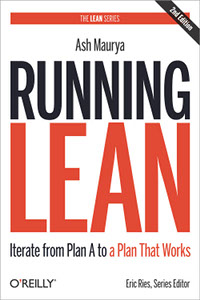
Running Lean book cover
Photos: Newman Communications
Ash Maurya, who has launched several start up companies, is convinced that most new products fail because those that launch them waste energy and resources on the wrong product. Figuring out what products to introduce into the market and how can be done by developing a plan, identifying the high risk parts of the plan and repeatedly testing the plan, he believes. In the second edition of Running Lean: Iterate from Plan A to A Plan That Works (O’Reilly, $24.99), published March 2012 as part of The Lean Series, he explains his thinking on the topic.
The book, written for entrepreneurs, business managers, senior executives, small business owners and anyone seeking to start a business project, presents a process he thinks optimizes the way to quickly outline and define good product ideas, maximizing the chances of success. Most product launches that succeed are ones that adjust their plans before they run out of resources, according to the book.
In the book, Maurya sets out to provide detailed tactics on ways to figure out what potential customers want, how to conduct a good customer interview, addressing issues such as finding the prospects and overcoming mental blocks when speaking to them. Talking to people is important, according to the author who thinks that running surveys and focus groups may seem more efficient than interviewing customers, but isn’t the best approach.

Ash Maurya, author, Running Lean
The 206-page hardcover book is divided into four parts: Roadmap, Document Your Plan A, Identify the Riskiest Parts of Your Plan, and Systematically Test Your Plan; and 15 chapters. Maurya, founder, Spark59, has worked closely with entrepreneurs, assisting them to test and fine tune their vision.
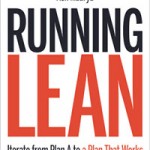
Click to buy Running Lean
Comments:
Filed Under: Books





















